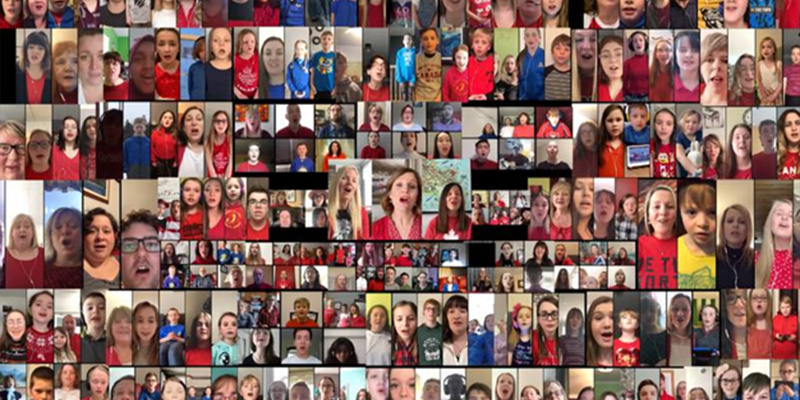
Soulful Collectives
Media, Art, and Performance Studies are interdisciplinary subjects that offer training in academic research as well as practical skills appropriate for today's highly dynamic field of media, visual arts, and performance.
While on the subject of performance, let’s talk about the musical tradition sing-along. By definition, community singing or group singing is an event of singing together at gatherings or festivities, less formally than choir singing.
Singing in groups is one of the universal features of human musical cultures, and group singing has been often suggested as the primary form of early human musical activity. Human group singing was primarily done as a mode of sticking together in a group. As a matter of fact, it was possibly used to defend human groups from predators and competitors.
Interestingly a similar practice of choric vocalizing is also known in several animal species. A lion pride or a pack of wolves are known to vocalize together supposedly to defend their territory, although some may not agree that it can be termed as "singing". Gibbons sing in family groups, couples sing together, sometimes with their offspring. Various species of birds also sing in duets and choruses.
The art and science of music in the Indian subcontinent is attributed to the third Veda or Sama Veda, which is the source of the seven notes/Saptaswara that form the basic scale of musical notation. The raga (tonal framework) developed from a series of rhythmic syllables set to a pattern that can be traced to the tradition of Sama chanting. Saman chanting was done in a singing group, the technique which was handed down to generations by the teacher-pupil oral tradition.
Humans sang out their emotions long before they were able to express their thoughts. It is likely that the earliest singing was individualistic and improvisatory, a simple imitation of the sounds heard in nature. At what point the singing of meaningful, communicative sounds began cannot be established, but it was doubtless an important step in the creation of language. In human societies, group singing can be limited to certain sexes, ages, and social groups. As a matter of fact, singing along is a custom, which is regularly scheduled like the sing-along sessions often referred to as "song circles" and sometimes even organized by formal groups or organizations.
However, according to Encyclopedia Britannica, in folk culture, “the central traditions of folk music are transmitted orally or aurally, that is, they are learned through hearing rather than the reading of words or music, ordinarily in informal, small social networks of relatives or friends rather than in institutions.”
The Eurasian style, found mainly in southern Europe, parts of Britain and Ireland, in addition to the Middle East and South Asia, is essentially associated with solo singing. The old European style, characteristic of central, eastern, and parts of northern Europe, is often associated with group singing in which the voices blend well.
A study of community songs and oral transmission of the communal singing process as a force for social change, as an expression of spirituality, and as means to build community in the lives of the underrepresented, is essential for learners of media with a deeper understanding of sensitivity to cultural diversity.
Men sang out their feelings long before they were able to speak their thoughts. It is likely the earliest singing was individualistic and improvisatory, a simple imitation of the sounds heard in nature. At what point the singing of meaningful, communicative sounds began cannot be established, but it was doubtless an important step in the creation of language.
In human societies, group singing can be limited to certain sexes, ages, and social groups. As a matter of fact, group singing can also be different in the actual sound, for example, singing in unison or octaves, accompanied or a Capella, or singing in harmony. Informal group singing can be accompanied by body movements, like stomping, or clapping.
Singing along is a custom, which is regularly scheduled like the sing-along sessions often referred to as "song circles" and sometimes even organized by formal groups or organizations.
Written by:
Prof. Avirupa Bhaduri
Faculty, Media and Communication
ISB&M, Kolkata






